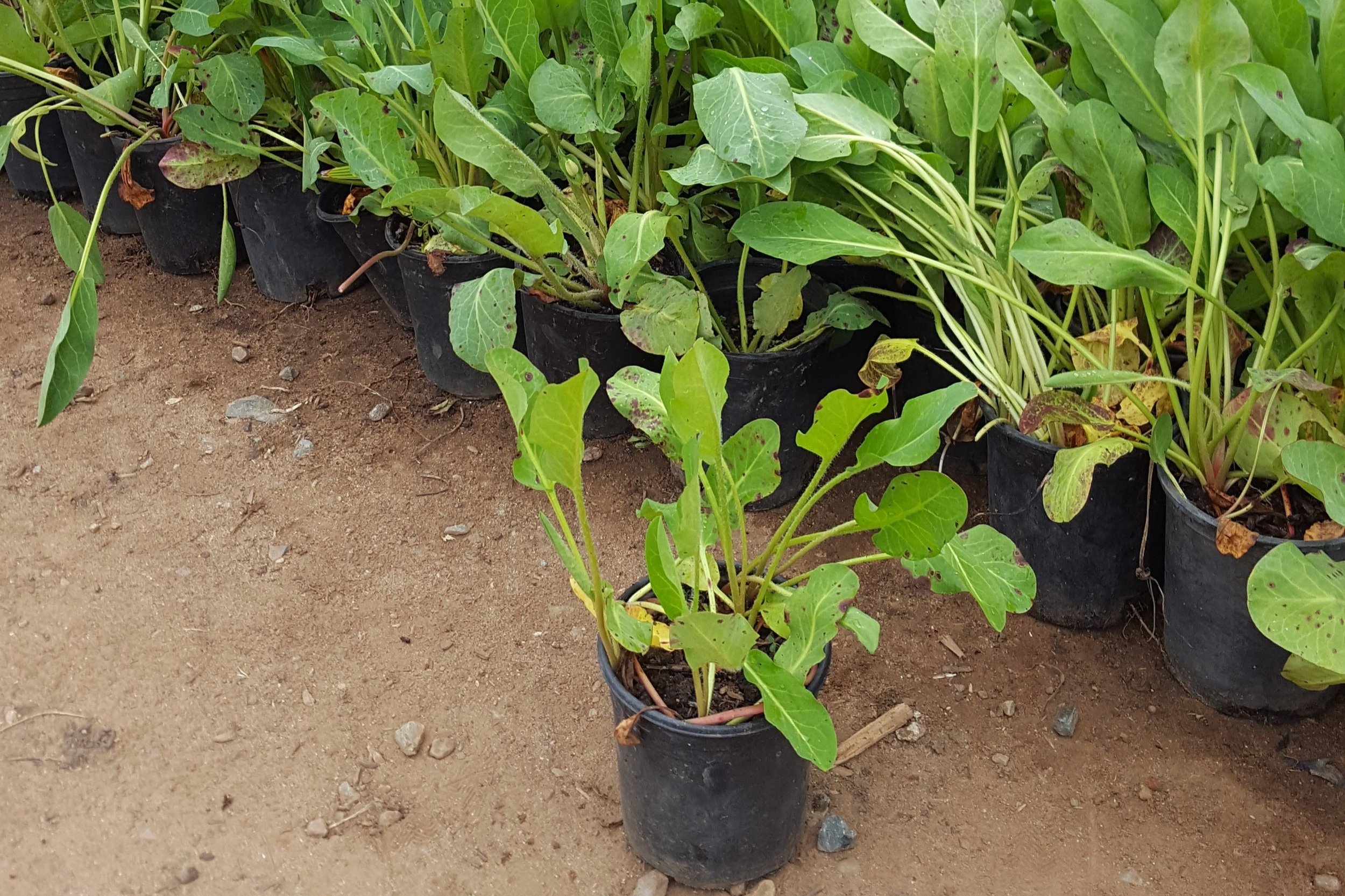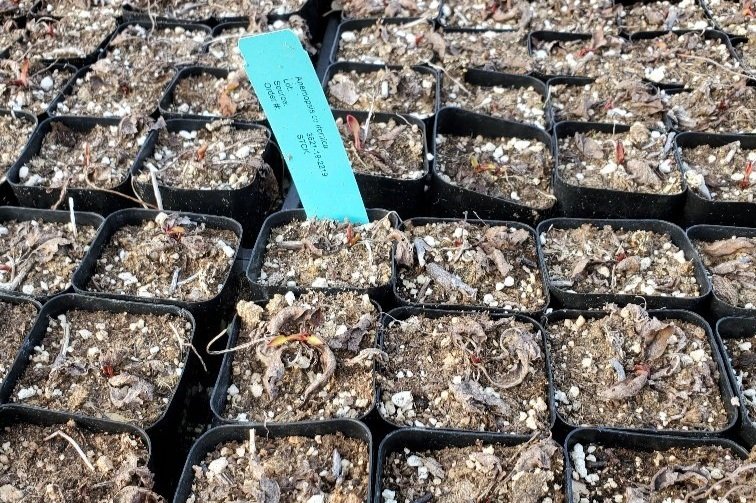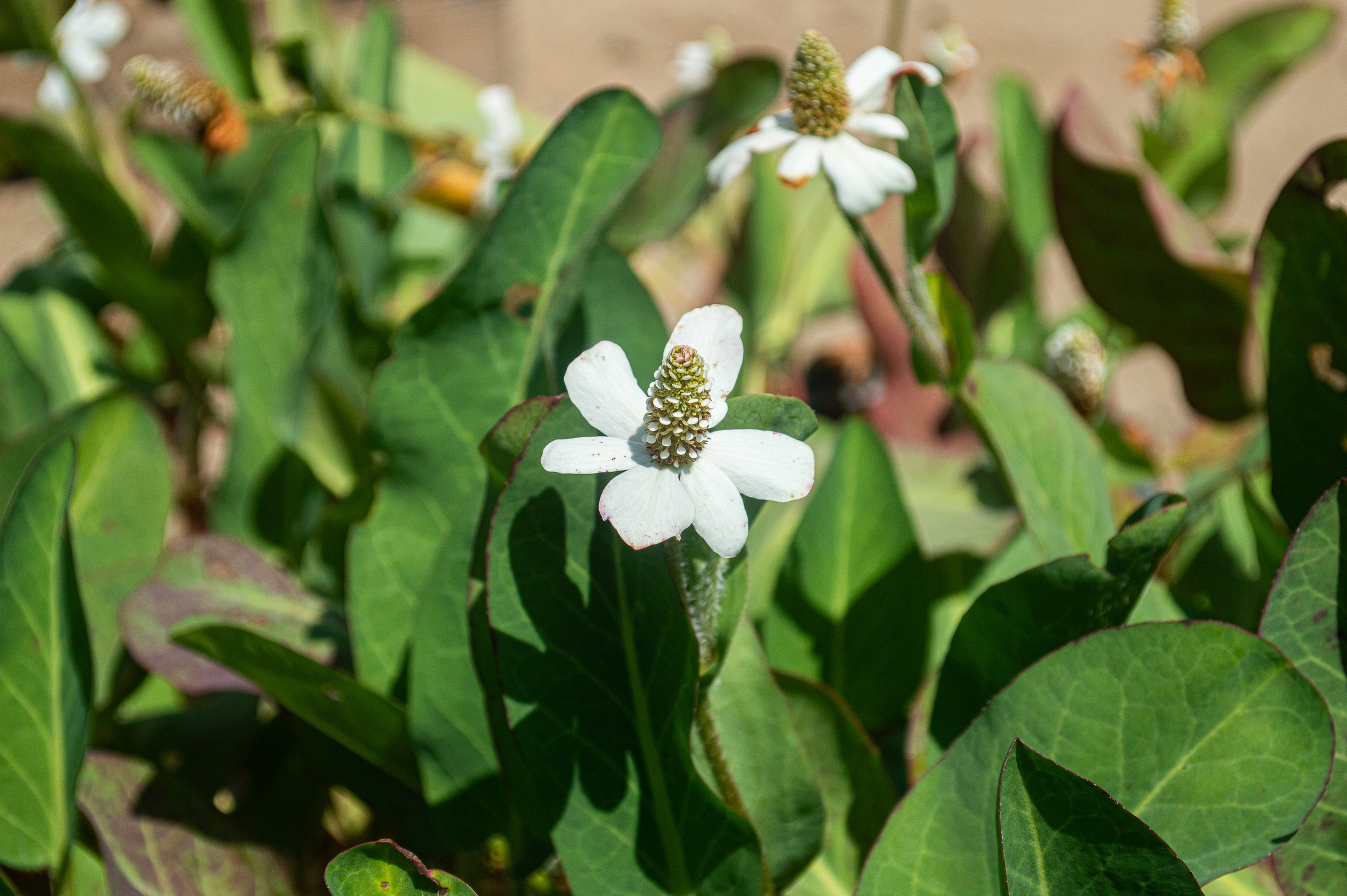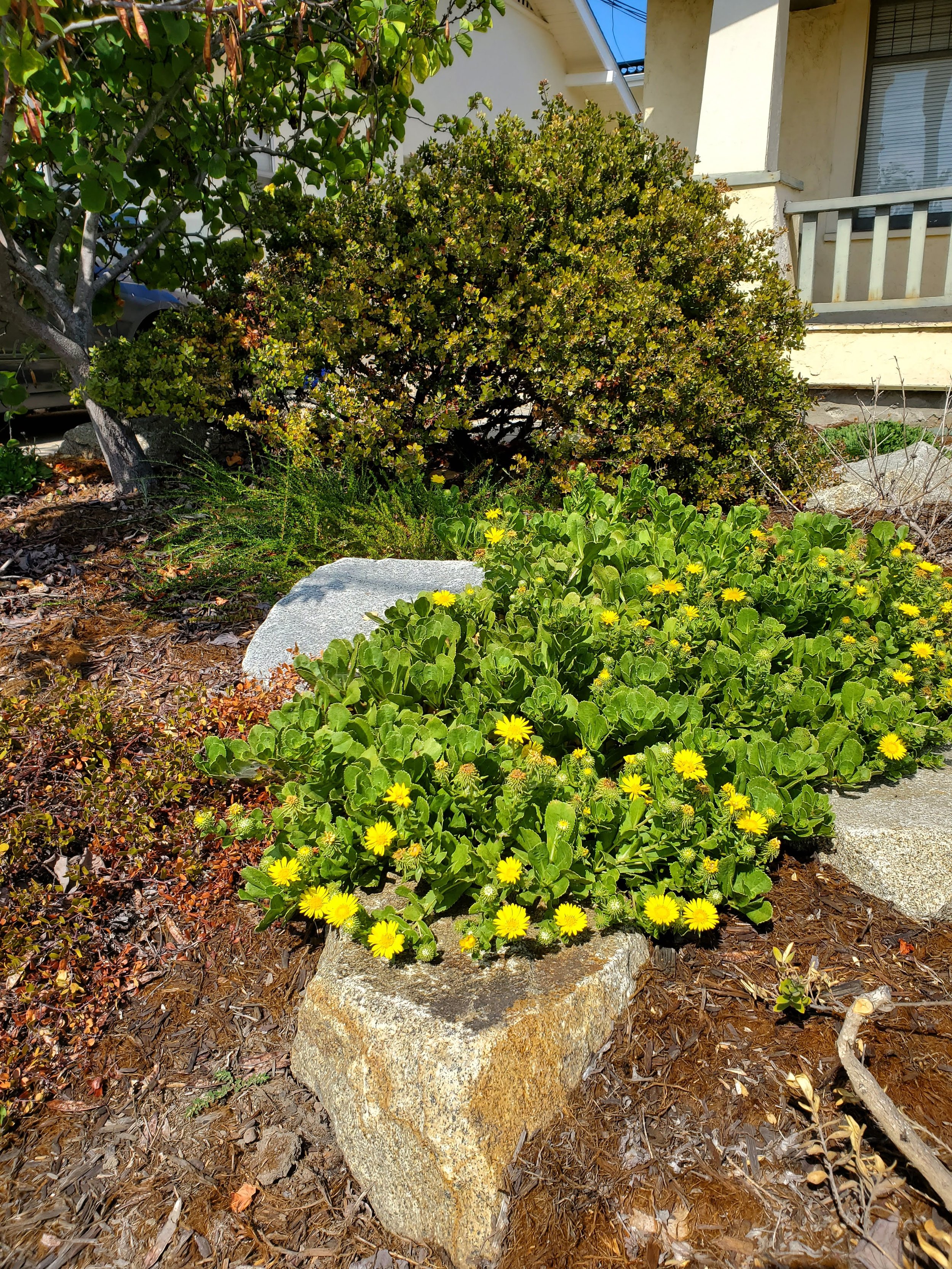Anemopsis californica (Yerba Mansa)
← Back to Plant DatabaseAnemopsis californica
Yerba Mansa



Characteristics
Height: 0.3 - 1 ft
Width: 1 ft
Hardiness: Very hardy
Natural Setting: Wet places - muddy creek banks, pond margins, bogs, springs
Plant Type: Perennial
Dormancy: Winter Semi-Deciduous
Form: Upright, spreading
Growth Rate: Fast-moderate
Flower Season: Spring, Early Summer
Soil: Adaptable as long as it stays consistently moist
Sun Exposure: Partial shade or full sun
Water Requirements: High
Summer Dry: Keep moist
Cold Tolerance: Tolerates cold to 0 - 5° F
Overview
Naturally found along stream and pond edges, requires moist soil. Beautiful spring blooms. Goes dormant in the winter and returns in the spring.
Uses
One of the best groundcovers for permanently wet, shaded areas. Good for the bottom of a bioswale.
History
Indigenous peoples have used Yerba Mansa extensively for its medicinal qualities. The plant's roots and leaves were typically used to make teas, tinctures, and poultices. It was used to treat colds, sore throats, skin conditions, and rheumatic pains. Its antimicrobial and anti-inflammatory properties were used for cuts, wounds, and infections.⁹
We encourage you to comment below and share your own experiences and recommendations for this species.
View Commenting Rules


A spreading perennial found in shady, moist areas. It has a pleasant fragrance and the leaves can be used for tea.